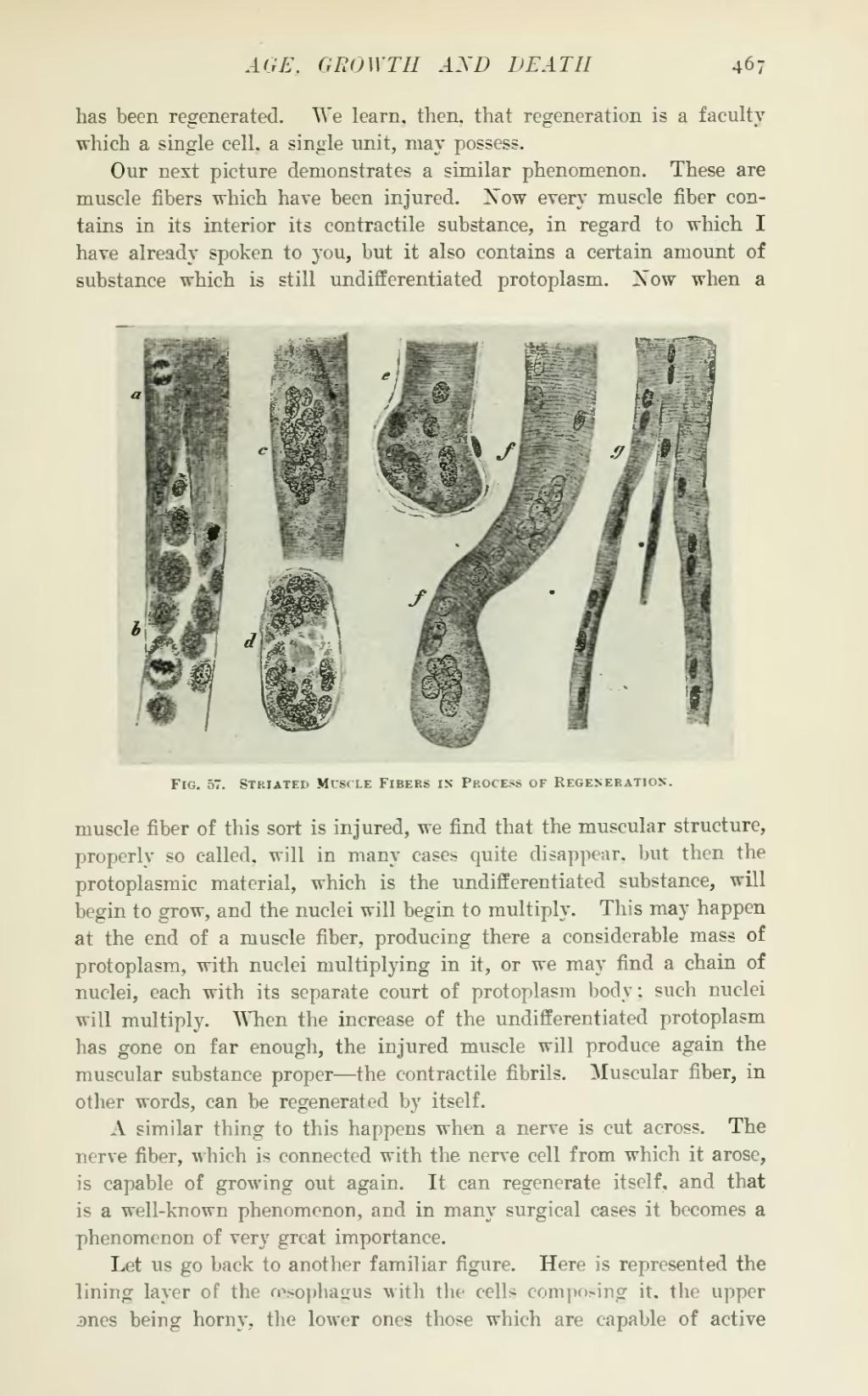has been regenerated. We learn, then, that regeneration is a faculty which a single cell, a single unit, may possess.
Our next picture demonstrates a similar phenomenon. These are muscle fibers which have been injured. Now every muscle fiber contains in its interior its contractile substance, in regard to which I have already spoken to you, but it also contains a certain amount of substance which is still undifferentiated protoplasm. Now when a
muscle fiber of this sort is injured, we find that the muscular structure, properly so called, will in many cases quite disappear, but then the protoplasmic material, which is the undifferentiated substance, will begin to grow, and the nuclei will begin to multiply. This may happen at the end of a muscle fiber, producing there a considerable mass of protoplasm, with nuclei multiplying in it, or we may find a chain of nuclei, each with its separate court of protoplasm body: such nuclei will multiply. When the increase of the undifferentiated protoplasm has gone on far enough, the injured muscle will produce again the muscular substance proper—the contractile fibrils. Muscular fiber, in other words, can be regenerated by itself.
A similar thing to this happens when a nerve is cut across. The nerve fiber, which is connected with the nerve cell from which it arose, is capable of growing out again. It can regenerate itself, and that is a well-known phenomenon, and in many surgical cases it becomes a phenomenon of very great importance.
Let us go back to another familiar figure. Here is represented the lining layer of the œsophagus with the cells composing it, the upper bones being horny, the lower ones those which are capable of active

